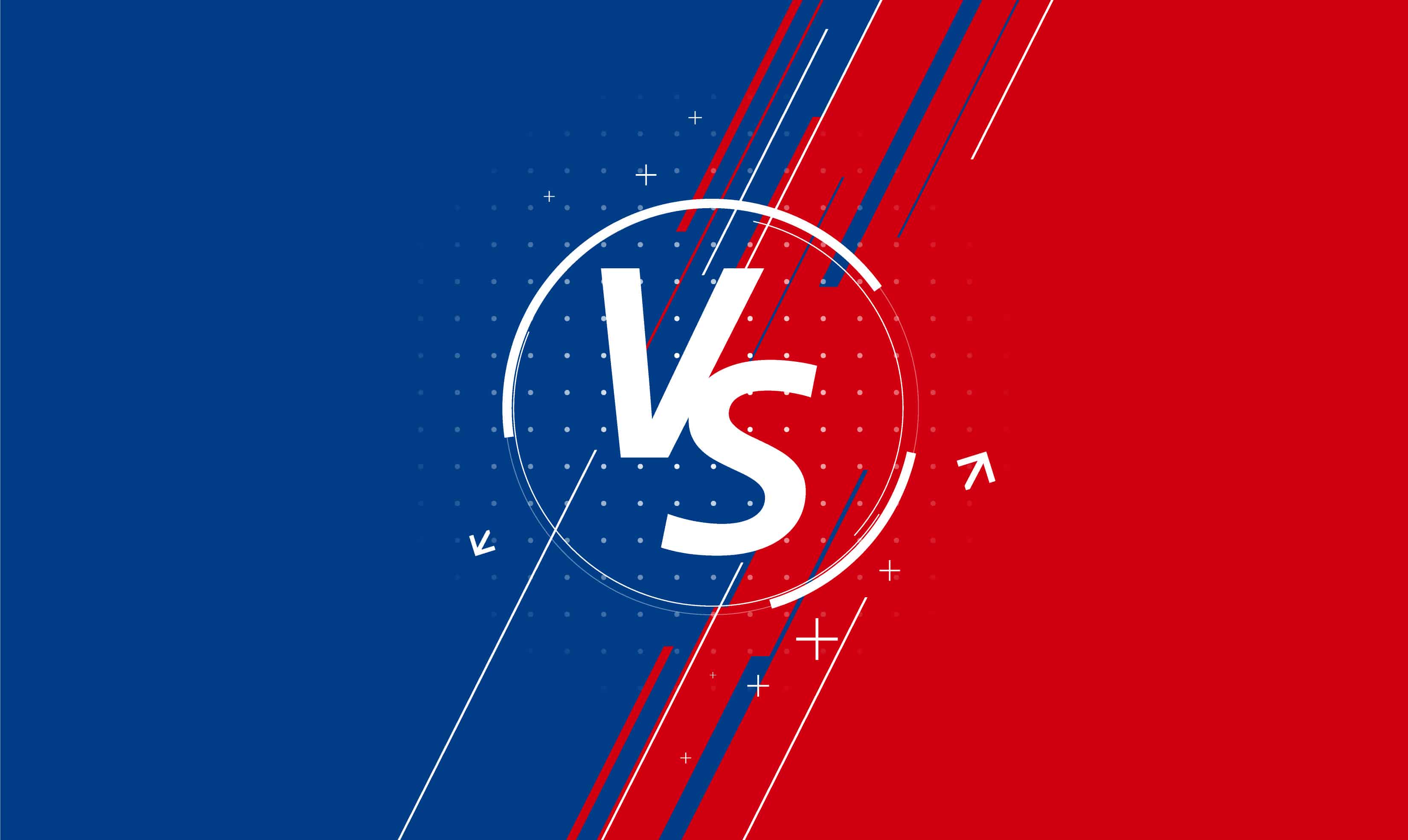- Introduction
- What is Angular?
- What is React?
- Features of Angular
- Features of React
- Difference between Angular vs React
- Angular vs React
- Advantages of React
- Disadvantages of React
- Advantages of Angular
- Disadvantages of Angular
- Angular and Reactjs Use Cases
- What is Angular Good for?
- What is Reactjs Good for?
- Reactjs & Angular Performance
- Testing in Angular & React
- Maintainability of Code: Angular vs React
- Server Rendering in Angular vs React
- Optimizing the Bundle-file – Angular vs React
- Reactjs and Angular Learning Curve
- Is Angular better than React?
- Conclusion
- Introduction
- What is Angular?
- What is React?
- Features of Angular
- Features of React
- Angular vs React
- Advantages of React
- Disadvantages of React
- Disadvantages of Angular
- Advantages of Angular
Introduction
As we all know, web development is rapidly increasing as every individual whether corporate or a person is trying to make their online presence on the web. And it increased the demand for web developers too. If you are learning Web Development or maybe you wanted to learn web development, then you may have seen, that there are some frameworks and JavaScript libraries that enhance the web development and speeds up the development process. But at some point, you may feel confused to choose which technology is better or which platform to choose for web development. Here comes the concept of Angular and React. Both of these can be used for web development. Angular and React, both provide various features for web development purposes such as speed & performance, incredible tooling, development across multiple platforms, and more.
Both of these are two different platforms, and they provide different features for web development. Due to this, it becomes difficult to choose which platform can be better for you to create web applications. Whenever someone talks about front-end programming, the Angular vs React topic always comes up. However, the answer relies on different circumstances and the motive of development. This article will help you to go through the features, key differences, and many more about Angular vs React.
So that, whenever you face any problem or any kind of situation choose any one of these i.e. Angular or React. You can easily choose the best platform for your developmental needs after reading this article.
What is Angular?
Angular JS is a framework of JavaScript that can be added to HTML pages inside <script> tags. It is developed by Google and first released in 2010 by the name AngularJS. Angular became one of the most popular web frameworks. It is a Typescript-based open-source platform that helps to create single-page web applications. If you’re looking to build web and mobile apps, then you can use Angular technology for creating these kinds of applications. Whether you want to get started with AngularJS or deepen your knowledge of the framework, these AngularJS courses are a great way to learn.
Angular is a structural framework for creating dynamic web applications and it allows web developers to use HTML inside the syntax of Angular explicitly. You can also check out an Angular tutorial for beginners that will help you gain insights.
What is React?
React is a JavaScript library developed by Facebook and open-sourced in 2013. It can be used to create UI components for web and mobile applications. It speeds up the process of creating interactive UI for various platforms. React is easy to understand and implement. The framework used by React is server-side rendering which makes it flexible and increased the performance of rendering of a webpage. React is easy to maintain and improvements in existing apps can be done easily by the use of its self-contained components. React is overtaking most of the development frameworks available in the market at the current time such as AngularJS. Due to its popularity and performance, Google improved the JavaScript framework giving it another name Angular2 in 2016.
Features of Angular
- Creation of forms with validation
- Useful for Separation of User Interface and Logic implemented in Business
- TypeScript saves time
- Angular’s community has improved the support for error handling.
- Updates can be introduced seamlessly with the help of Angular CLI
- Angular code is more clear and easy to understand.
- It provides the use of Local CSS and shadows DOM
Features of React
- It allows the use of third-party libraries.
- It incorporates rapid development of the application.
- Simple and composability is other key feature of React.
- The components in React JS can be reused multiple times which increases its productivity.
- User experience and overall performance of the application can be improved by the use of React.
- The code of reacting is stable with one-directional binding of data.
Difference between Angular vs React
The difference between Angular and React is as follows:
| Angular | React |
| Angular is a framework that can be used to update Real DOM. The flow of data is also ensured in the architecture of Angular for both directions. | React is a Javascript library and it updates the Virtual DOM. The data flow in React is only in a single direction. |
| Angular is a bit complex to understand as it follows MVM (Model View Model). Angular includes a number of tools and some features that are required for routing, navigation, and several other functionalities. | React is simple and easy to understand as it follows MVC (Model View Control). React includes features just like Angular e.g. navigation, routing, and others. But it needs more configuration setup and integration for using its features. |
| Angular is also called a subset of HTML. | React holds JSX which allows the use of HTML code. But it doesn’t mean that it is a subset of HTML. It is because React is pure javascript-based. |
| Angular is platform-independent which means it is compatible with various platforms. Due to this, the HTML language is also compatible with Angular as it also supports all browsers. | React is used when there is a need for dynamic content in the application. React also offers developers the to make platform-independent applications and it makes easier the reuse of a single source code. |
| Angular uses the hierarchical dependency injection concept. | React does not use any dependency injection concept. |
Angular vs React
| Parameters | Angular | React |
| Type | Angular JS is a complete framework. | ReactJS is not a complete framework. Instead, it is a JavaScript library. |
| Learning Curve | Angular JS is difficult to learn and it requires a lot of training. | React JS is easy to learn when compared to Angular JS. But it becomes difficult to learn React when it is augmented with Redux. |
| Restriction | The Angular framework is so sensitive that restricts you from using large models for creating applications. | In React, there is an option of putting a performance penalty. |
| Support by Community | The community of Angular JS is very large and has a viable support system. | React doesn’t offer as much community support as Angular JS provides. |
| Documentation | The documentation of Angular JS is slower due to its ongoing development. | The documentation of React JS is faster as compared to Angular JS. |
| Updates | Angular JS gets updates after every six months where it provides bug fixing and introduces new features. | The script in React makes it simple to get updates and is helpful in migration too. |
| Model | Angular is based on Model View Controller (MVC) | React is based on Virtual DOM. |
| Written In | Angular is written in TypeScript. | React is written in JavaScript. |
| Used by some popular Companies: | Popular companies using Angular include Wepay, Beam, Auto Trader, Mesh, etc. | Some popular companies that use React for their development and other work, include Facebook, Netflix, Instagram, Pinterest, etc. |
| Application Types | The development of single-page applications and mobile apps can be done easily by using Angular Framework. | Native apps, web apps, or hybrid apps can be created easily by the use of React. |
There are some key differences between Angular VS React such as:
- UI Components
- Language
- Purpose
- Data binding
- DOM
Advantages of React
- React is easy to learn because of its simple design and syntax.
- The ‘codemod’ feature offered by Facebook is very useful to automate various processes.
- Skills that are learned from React are very useful in Native development.
- When React is combined with ES6/7, it manages heavy loads with relative cases very easily.
- The syntax of React is much like HTML which allows developers to create templates with detailed documentation.
- React provides enhanced support for server-side rendering making it a robust framework for specific applications that focus on content.
- Migration between its different versions is easy.
Disadvantages of React
- Some complex configurations are required when we integrate React into the traditional MVC framework.
- The developers are required to have in-depth knowledge about ReactJS to integrate the User interface into the MVC framework.
Advantages of Angular
- It offers simple and clean code development.
- Angular CLI is available for introducing seamless updates.
- The angular framework is capable of handling routing and switching from one view to another.
- The interface of Angular is inspired by Material Design.
- The efficiency of applications can be increased by the use of Angular.
- High performance can be achieved in applications by using Angular.
Disadvantages of Angular
- The features of Angular might be confusing for new learners or users.
- The learning curve of Angular is steep which means it is difficult to learn.
- Integration with third-party applications is difficult in Angular.
- Switching between its different versions may create several issues e.g. moving from its older version to a newer one.
- It becomes slow in loading when we embed interactive elements in the User Interface.
Angular and Reactjs Use Cases
Angular and React are both popular JavaScript libraries for building web applications. They are both maintained by Facebook and are often used to build single-page applications (SPAs).
Here are some common use cases for Angular and React:
Angular:
- Building complex and large-scale SPAs
- Creating dynamic forms
- Implementing complex routing
- Integrating with backend APIs
- Adding real-time functionality
React:
- Building SPAs and mobile applications
- Creating reusable UI components
- Optimizing performance by limiting re-renders
- Integrating with third-party libraries and APIs
Both Angular and React can be used to build a wide variety of web applications, and the choice between the two often comes down to personal preference and the specific requirements of the project. It’s also worth noting that both libraries can be used in combination with other tools and frameworks, such as Redux for state management, to build even more powerful and feature-rich applications.
What is Angular Good for?
Angular is a JavaScript framework for building web applications and websites. It is designed to make it easy to build large, complex applications by providing a structure for organizing code, as well as a set of features and tools for implementing common tasks.
Some of the things that Angular is particularly good for include:
- Building single-page applications (SPAs): Angular is often used to build SPAs, which are web applications that load a single HTML page and dynamically update the page as the user interacts with the app.
- Creating dynamic forms: Angular provides a powerful set of tools for building and validating forms, including support for reactive forms and validation.
- Implementing complex routing: Angular’s router allows developers to easily define and implement complex routing patterns, including nested routes and lazy loading.
- Integrating with backend APIs: Angular’s dependency injection system and HTTP client make it easy to consume APIs and other backend services.
- Adding real-time functionality: Angular’s support for WebSockets and other real-time technologies makes it easy to build applications that can update in real-time.
Overall, Angular is a powerful and feature-rich framework that is well-suited for building complex and scalable web applications.
What is Reactjs Good for?
React is a JavaScript library for building user interfaces. It is designed to make it easy to build reusable UI components, and it is particularly well-suited for building interactive and dynamic applications.
Some of the things that React is particularly good for include:
- Building single-page applications (SPAs) and mobile applications: React is often used to build SPAs, which are web applications that load a single HTML page and dynamically update the page as the user interacts with the app. It can also be used to build mobile applications using tools like React Native.
- Creating reusable UI components: React’s component-based architecture makes it easy to create reusable UI components that can be shared across an application.
- Optimizing performance by limiting re-renders: React’s virtual DOM allows it to efficiently update the UI by only rendering the parts of the DOM that have changed rather than re-rendering the entire DOM.
- Integrating with third-party libraries and APIs: React is designed to be flexible and can be easily integrated with other libraries and APIs.
Overall, React is a lightweight and efficient library that is well-suited for building interactive and dynamic user interfaces.
Reactjs & Angular Performance
Both React and Angular are popular JavaScript libraries for building web applications, and they can both be used to build efficient and performant applications. However, they have some key differences in terms of their design and how they handle performance.
React is a library for building user interfaces, and it is designed to be efficient and declarative. It uses a virtual DOM (a lightweight in-memory representation of the actual DOM) to minimize the number of DOM updates required when the state of a component changes. This makes it easy to build performant applications, as React takes care of minimizing the amount of work that needs to be done to update the UI.
Angular, on the other hand, is a full-featured framework that includes a number of features for building web applications, including a templating system and dependency injection. Angular uses a real DOM, which means it updates the actual DOM elements when the state of a component changes. This can lead to slower performance in some cases, as updating the DOM is generally slower than updating a virtual DOM.
Overall, both React, and Angular can be used to build efficient and performant applications, and the choice between the two will depend on the specific needs and requirements of your project.
Testing in Angular & React
Testing is an important part of the development process, as it helps to ensure that an application is functioning correctly and is of high quality. React and Angular provide tools and features to support testing, although the specific approaches to testing can be quite different.
In React, testing is typically done using a combination of unit tests and integration tests. Unit tests are used to test individual components or functions in isolation, while integration tests are used to test the interaction between different components. There are a number of popular tools and libraries for testing React applications, including Jest, Enzyme, and React Testing Library.
Angular provides a comprehensive testing framework called Karma, which is built on top of the popular test runner Jasmine. Karma can be used to run unit tests, as well as end-to-end tests that simulate the behavior of a user interacting with the application. Angular also provides a number of utilities and abstractions to make it easier to test components, services, and other parts of the application.
Maintainability of Code: Angular vs React
Overall, both React, and Angular provide robust tools and frameworks for testing, and the specific approach to testing will depend on the needs and requirements of your project.
Maintainability is an important consideration when choosing a framework for building a web application. Both Angular and React are popular choices for building modern web applications, and both have their own strengths and weaknesses when it comes to maintainability.
Angular is a full-featured framework that provides many tools and features out of the box, making it easier to maintain large, complex applications. Angular’s component-based architecture and use of TypeScript can also help make code more maintainable by providing a clear separation of concerns and improved type checking.
On the other hand, React is a lightweight library that focuses on the view layer of an application. While it doesn’t provide as many built-in features as Angular, it can be easier to pick up and use, and its small size and flexibility make it easier to integrate into a variety of different projects.
Ultimately, the choice between Angular and React will depend on the specific needs of your project. If you need a full-featured framework with strong tools for large, complex applications, Angular may be the better choice. If you need a lightweight library that is easy to pick up and use and that can be easily integrated into a variety of projects, React may be a better fit.
Server Rendering in Angular vs React
Server rendering, also known as server-side rendering, is a technique used to improve the performance of web applications by rendering the initial HTML on the server rather than the client. This can be useful for a number of reasons, including improving the performance of applications for users with slower internet connections or lower-powered devices and making it easier for search engines to index the content of the application.
Both Angular and React support server rendering, but the approaches they take to achieve it are slightly different.
In Angular, server rendering is achieved using a library called Angular Universal. Angular Universal allows you to run your Angular application on the server, rendering the initial HTML on the server and sending it to the client. This can help improve the performance of your application, especially for users with slower internet connections or lower-powered devices.
In React, server rendering is achieved by rendering the React components to static HTML on the server and then serving that HTML to the client. This can be done using a library like Next.js, which provides a simple way to set up server rendering for React applications.
Both Angular and React offer tools and libraries to help with server rendering, and which one you choose will depend on your specific needs and the requirements of your application.
Optimizing the Bundle-file – Angular vs React
Optimizing the bundle file for a web application is an important step in improving the performance of the application. The bundle file is a single file that contains all of the code, assets, and other resources needed by the application, and reducing its size can help improve the speed with which the application loads and runs.
Both Angular and React offer a number of ways to optimize the bundle file for your application.
In Angular, one way to optimize the bundle file is to use the Angular CLI to build your application in production mode. This will minify the code, remove any unused code, and perform other optimizations to reduce the size of the bundle file. You can also use the “tree shaking” feature of the Angular compiler to remove any unused code from your application, which can further reduce the size of the bundle file.
In React, you can use tools like webpack and Babel to optimize the bundle file for your application. Webpack can be configured to minify the code, remove unused code, and perform other optimizations to reduce the size of the bundle file. Babel can be used to transpile your code to a version of JavaScript that is compatible with a wider range of browsers, which can also help reduce the size of the bundle file.
Overall, both Angular and React offer a number of ways to optimize the bundle file for your application, and the specific approach you choose will depend on the needs of your project.
Reactjs and Angular Learning Curve
The learning curve for React and Angular can vary depending on your background and experience with web development.
React is a JavaScript library that focuses on the view layer of an application. It is relatively easy to learn and use, especially if you are already familiar with JavaScript and have some experience building web applications. React’s syntax is simple and easy to understand, and it has a large and active community of developers who have created a wealth of resources, tutorials, and documentation to help you get started.
Angular, on the other hand, is a full-featured framework that provides a wide range of tools and features for building web applications. While it can be more powerful and flexible than React, it can also be more complex and have a steeper learning curve. Angular uses a component-based architecture and extensively uses TypeScript, which can be intimidating for developers who are new to these concepts. Additionally, Angular has a more verbose syntax than React, which can make it harder to learn for some people.
Overall, both React, and Angular are powerful tools for building web applications, but React may be easier for developers who are new to web development or who are more familiar with JavaScript to learn and use.
Is Angular better than React?
It’s difficult to say definitively whether Angular or React is “better,” as the choice of which framework or library to use will depend on the specific needs and goals of your project. Both Angular and React are popular choices for building modern web applications, and each has its own strengths and weaknesses.
Here are a few points to consider when deciding between Angular and React:
- Angular is a full-featured framework that provides a wide range of tools and features for building web applications. It uses a component-based architecture and makes extensive use of TypeScript, which can make it easier to maintain large, complex applications.
- React is a lightweight library that focuses on the view layer of an application. It is simple and easy to learn, and its small size and flexibility make it easy to integrate into a variety of different projects.
- Angular may be a better choice for larger, more complex applications that require a full-featured framework with strong tools for maintainability and scalability.
- React may be a better choice for smaller projects or for developers who are more comfortable with JavaScript and want a lightweight library that is easy to learn and use.
Conclusion
While there are so many frameworks available for use, every framework has its benefits and disadvantages. And choosing a better framework for development can be a tedious task because when we are in the development stage, we may require some features that are not in the framework we are using currently. Therefore, migration from one framework to another is also difficult as we have to migrate the whole application to a new framework just to fulfil the needs of its required features.
When it comes to choosing a framework, You must have to understand the in-depth difference between Angular and React, I recommend choosing any of them based on your requirements.. For example, we discussed the features of both Angular and React and if you look after them, and compare them with your requirements, then it may give you a clear idea about these frameworks. And it will make it easy for you to choose the best framework for your application development.
While you are making a selection between these frameworks, keep in mind the point we talked about in this article, i.e. React has a simpler learning curve while Angular has a steep learning curve. Therefore, it may affect the development to make it faster as well as slower. Even though Angular has a steep learning curve, it offers more functionality and features than React.
In conclusion, we can say that both the technologies are powerful and useful from a different point of view and use. So, choosing the right framework depends on the type of application you are developing and the requirements.






